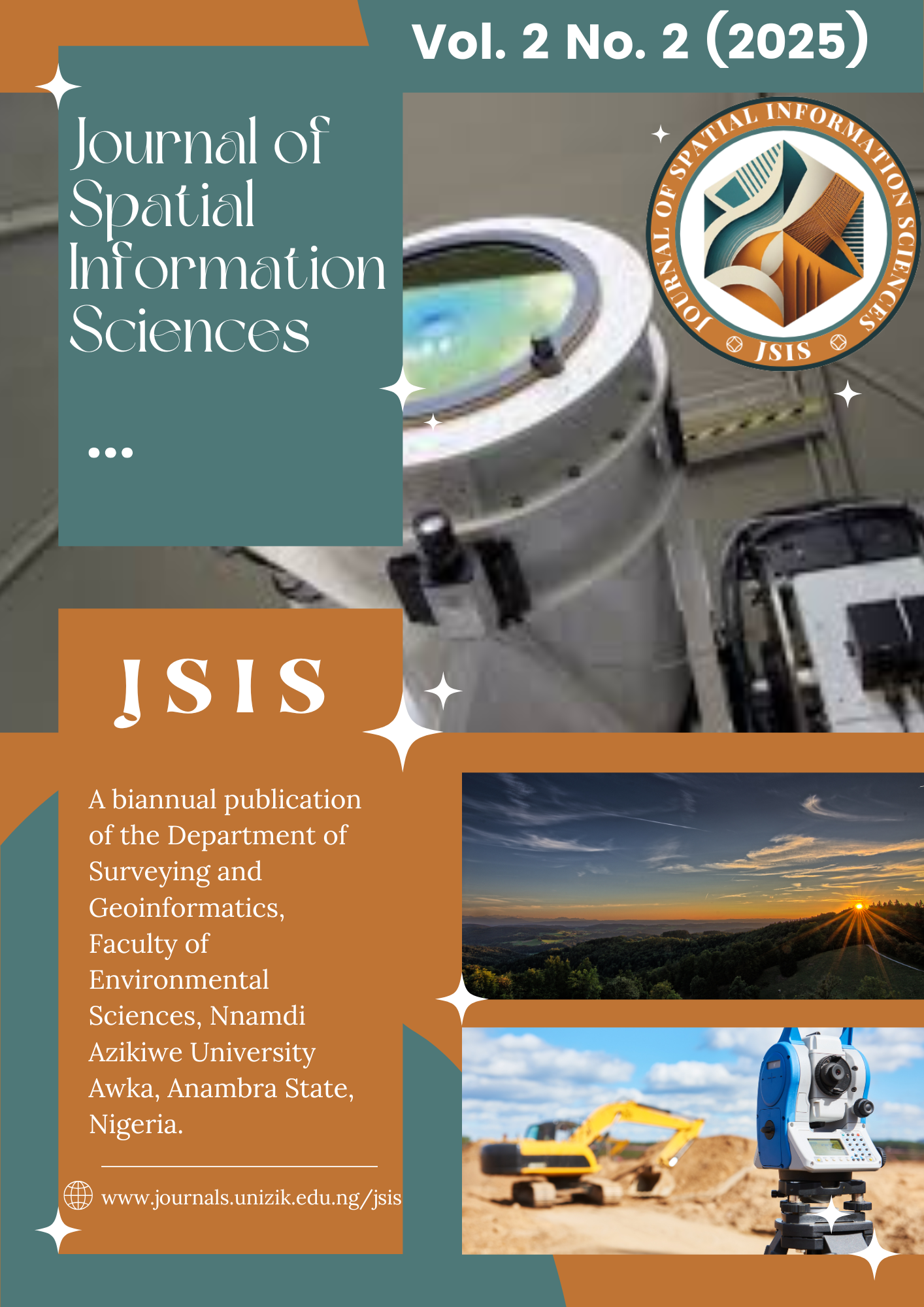Spatio-Temporal Monitoring of Desertification in Sokoto State Using Remote Sensing and Vegetation Indices
DOI:
https://doi.org/10.5281/zenodo.15667752Keywords:
Environment, Monitoring, Remote Sensing, Desertification, Climate changeAbstract
Desertification poses a grave challenge to the environment and socio-economic stability of Northern States in Nigeria. Desertification monitoring was analyzed for Sokoto state with the collection of MOD13Q1(250-m), MYD13Q1 (1-km) and the Vegetation Index Phenology (VIP VIPPHEN NDVI) from NASA. The Vegetation Index and Phenology (VIP) global datasets were created using surface reflectance data from the Advanced Very High Resolution Radiometer (AVHRR) from 1981 to 1999 and Moderate Resolution Imaging Spectroradiometer (MODIS)/Terra MOD09 surface reflectance data from 2000 to 2014. The Modis MOD13Q1 and MYD13Q1 were used to access the vegetation index (NDVI) and Land surface temperature LST of 2010 to 2020 while the VIP VIPPHEN NDVI was used to access the NDVI of 2000. The LST of 2000 were collected from The Tropical Rainfall Measuring Mission (TRMM). The Modis data and the Phenology NDVI were resampled using Landsat L8 path 191 and row 51 of Sokoto state coverage and were re-projected from unknown datum to WGS1984 UTM zone 32N. The vegetation health index (VHI), Vegetation Condition Index (VCI) and the Thermal condition index (TCI) were estimated. TCI for the year 2000 has the highest percentage with 56.94% which falls within the normal range, the severe range has the highest percentage with 64.62% and 59.83% for the year 2010 and 2020 respectively. This result clearly indicates a decrement in the thermal condition between 2010 and 2020. The VCI analysis indicates that severe drought conditions affected the highest proportion of land in 2000 (42.21%,), 2010 (42.88%) and 2020 (42%). In VHI, the abnormal stress has the highest percentage with 56.54% for 2000 while the severe stress with 41.95% and 41.92% for 2010 and 2020 respectively. The result shows that four regions of the state (Gudu, Isa & Kebbe, Rabah, Tambawal & Tangazar) were the most affected weather for the year with highest or lowest analysis. This research provides the cost-effective means by tracking trends in degradation of land revealing the most severe which is important for the implementation of timely mitigation strategies by sustainable policy makers.
Downloads
Published
Issue
Section
License

This work is licensed under a Creative Commons Attribution-ShareAlike 4.0 International License.





